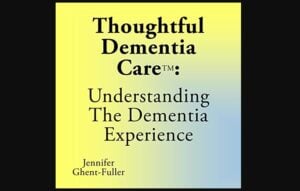Athletes know a vigorous workout can release a flood of endorphins: “feel-good” hormones that boost mood. Now there’s evidence that exercise produces another hormone called “irisin” that may improve memory and protect against Alzheimer’s disease. This is according to a study co-led by Ottavio Arancio, MD, PhD, a researcher at Columbia University’s Vagelos College of Physicians and Surgeons and Taub Institute for Research on Alzheimer’s Disease and the Aging Brain.
The study was published in Nature Medicine.
Exercise, Irisin & Neuronal Growth
Physical activity is known to improve memory, and studies suggest it may also reduce the risk of Alzheimer’s disease. But researchers don’t understand why.
A few years ago, exercise researchers discovered a hormone called irisin that is released into the circulation during physical activity. Initial studies suggested that irisin mainly played a role in energy metabolism. But newer research found that the hormone may also promote neuronal growth in the brain’s hippocampus, a region critical for learning and memory.
Protective Role
“This raised the possibility that irisin may help explain why physical activity improves memory and seems to play a protective role in brain disorders such as Alzheimer’s disease” says Arancio, who is a professor of pathology and cell biology and of medicine at Columbia University Vagelos College of Physicians and Surgeons.
Irisin Reduced in People with Alzheimer’s
In the new study, Arancio and his colleagues at the Federal University of Rio de Janeiro in Brazil and Queens University in Canada first looked for a link between irisin and Alzheimer’s in people. Using tissue samples from brain banks, they found that irisin is present in the human hippocampus and that hippocampal levels of the hormone are reduced in individuals with Alzheimer’s.
To explore what irisin does in the brain, the team turned to mice. These experiments show that irisin, in mice, protects the brain’s synapses and the animals’ memory: When irisin was disabled in the hippocampus of healthy mice, synapses and memory weakened. Similarly, boosting brain levels of irisin improved both measures of brain health.
Swimming Boosts Irisin, Protects Memory in Lab
The researchers then looked at the effect of exercise on irisin and the brain. In the study’s most compelling experiments, the researchers found that mice who swam nearly every day for five weeks did not develop memory impairment despite getting infusions of beta amyloid — the neuron-clogging, memory-robbing protein implicated in Alzheimer’s.
Blocking irisin with a drug completely eliminated the benefits of swimming, the researchers also found. Mice who swam and were treated with irisin-blocking substances performed no better on memory tests than sedentary animals after infusions with beta amyloid.
Together the findings suggest that irisin could be exploited to find a novel therapy for preventing or treating dementia in humans, Arancio says. His team is now searching for pharmaceutical compounds that can increase brain levels of the hormone or can mimic its action.
Need for Drug to Mimic Irisin
“In the meantime, I would certainly encourage everyone to exercise, to promote brain function and overall health,” he said. “But that’s not possible for many people, especially those with age-related conditions like heart disease, arthritis, or dementia. For those individuals, there’s a particular need for drugs that can mimic the effects of irisin and protect synapses and prevent cognitive decline.”
Prior Attempt to Mimic Irisin
In a previous study, a protein called FNDC5 was shown to be produced by muscular exertion and released into the bloodstream as the variant called irisin.
This protein is increased by endurance exercise. The researchers isolated the protein and gave it to non-exercising mice. It turned on genes that promote brain health and encourage the growth of new nerves involved in learning and memory. The research was reported by scientists from Dana-Farber Cancer Institute and Harvard Medical School.
The findings, reported in the journal Cell Metabolism, help explain the well-known capacity of endurance exercise to improve cognitive function, particularly in older people. If the protein can be made in a stable form and developed into a drug, it might lead to improved therapies for cognitive decline in older people and slow the toll of neurodegenerative diseases such Alzheimer’s and Parkinson’s, according to the investigators.
Natural Substance
“What is exciting is that a natural substance can be given in the bloodstream that can mimic some of the effects of endurance exercise on the brain,” said Bruce Spiegelman, PhD, of Dana-Farber and HMS. He is co-senior author of the publication with Michael E. Greenberg, PhD, chair of neurobiology at HMS.
In the new research, endurance exercise – mice voluntarily running on a wheel for 30 days – increased the activity of a metabolic regulatory molecule, PGC-1α, in muscles, which spurred a rise in FNDC5 protein. The increase of FNDC5 in turn boosted the expression of a brain-health protein, BDNF (brain-derived neurotrophic protein) in the dentate gyrus of the hippocampus, a part of the brain involved in learning and memory.
Generating New Nerve Cells
It has been found that exercise stimulates BDNF in the hippocampus, one of only two areas of the adult brain that can generate new nerve cells. BDNF promotes development of new nerves and synapses – connections between nerves that allow learning and memory to be stored – and helps preserve the survival of brain cells.
How exercise raises BDNF activity in the brain wasn’t known; the new findings linking exercise, PGC-1α, FNDC5 and BDNF provide a molecular pathway for the effect, although Spiegelman and his colleagues suggest there are probably others.
Getting it Artificially
Having shown that FNDC5 is a molecular link between exercise and increased BDNF in the brain, the scientists asked whether artificially increasing FNDC5 in the absence of exercise would have the same effect. They used a harmless virus to deliver the protein to mice through the bloodstream, in hopes the FNDC5 could reach the brain and raise BDNF activity. Seven days later, they examined the mouse brains and observed a significant increase in BDNF in the hippocampus.
“Perhaps the most exciting result overall is that peripheral deliver of FNDC5 with adenoviral vectors is sufficient to induce central expression of Bdnf and other genes with potential neuroprotective functions or those involved in learning and memory,” the authors said. Spiegelman cautioned that further research is needed to determine whether giving FNDC5 actually improves cognitive function in the animals. The scientists also aren’t sure whether the protein that got into the brain is FNDC5 itself, or irisin, or perhaps another variant of the protein.
Getting it Naturally
Spiegelman said that development of irisin as a drug will require creating a more stable form of the protein.
In the meantime, you can get it naturally by exercising.











